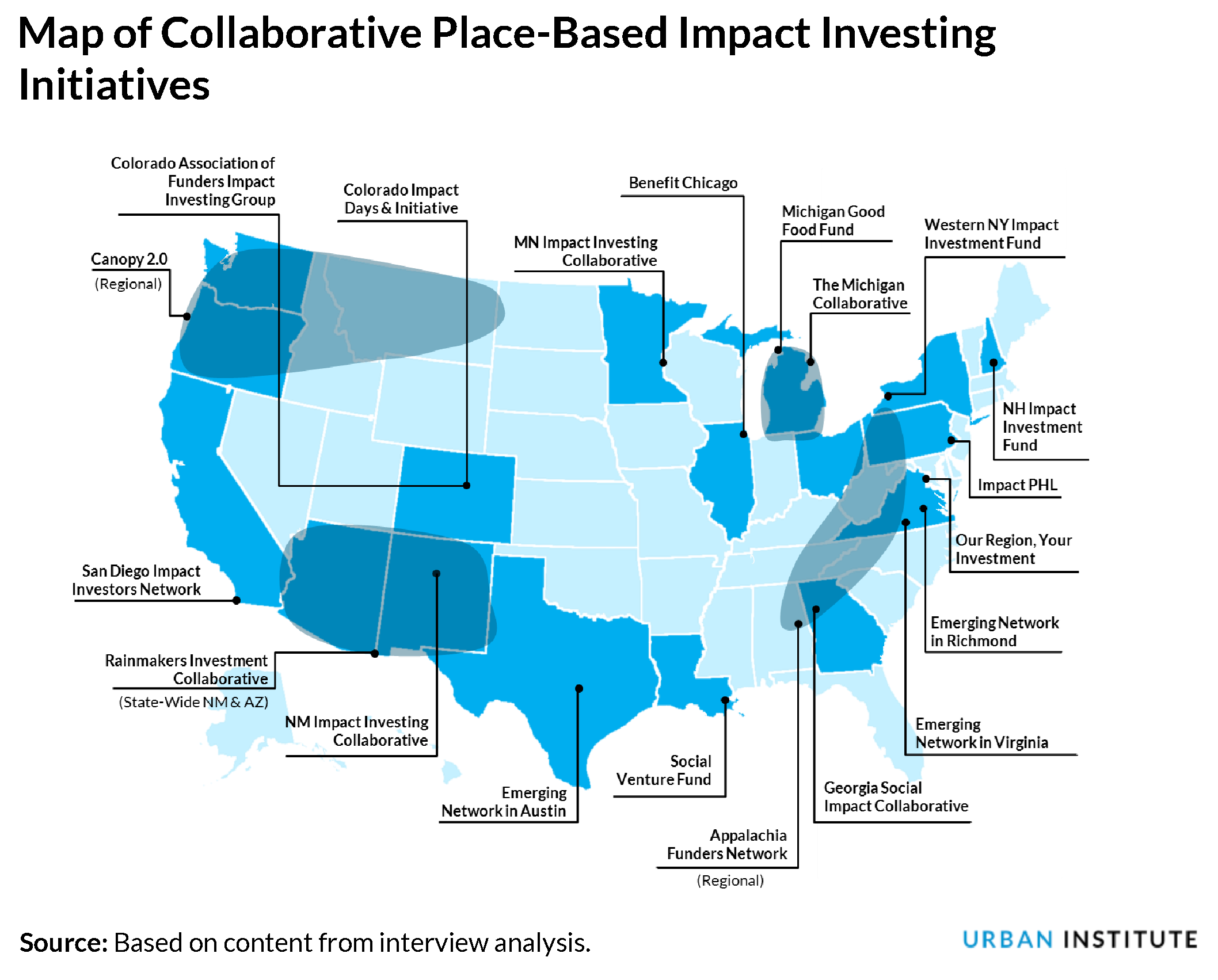
<p>Photo by Gary Burchell/Getty Images.</p>
Place-based impact investing is gaining momentum in philanthropy, helping communities grow small businesses, create high-wage jobs, and increase the supply of affordable housing.
Rather than going at this practice alone, many foundations, especially small and midsize foundations, are designing innovative ways to work with each other and leverage their own investment capital and the capital of others to make progress on positive community goals.
Collaboration helps these foundations pool resources, increase investor capacity, streamline the investment process, and align investments toward community-led visions.
In a report released today, we track and categorize collaborative place-based impact investing initiatives across the country.

These initiatives’ origins, operational structures, and activities vary, but our report reveals three ways collaboration can help place-based impact investing grow and make positive contributions.
1. Building knowledge and sharing costs
Through education and peer exchange, some collaborative initiatives allow investors to learn about investment options in different asset classes and about investment opportunities that provide a mix of risk-return trade-offs. Potential investors can participate in workshops, receive one-on-one guidance from experts, and learn from different model portfolios.
For foundations and investors that have committed to impact investing but face capacity limitations, collaborative initiatives can provide opportunities for sharing costs and responsibilities, which can make investing more manageable. Collaborations can lead to cost sharing for data analysis and due diligence, distributing effort needed to maintain sufficient deal flow and, sometimes, pooling grant funds to share the costs of consultants and staff.
2. Aligning investments with community needs
In these collaborative initiatives, leaders in philanthropy are creating opportunities to better align capital with community needs. This trend follows the increased interest in collaboration among foundations in their grantmaking as they seek to combine their vision and expertise to address complex problems and develop more integrated philanthropic strategies in communities.
Now, this same collaborative impulse is reaching the investment side of foundations, an area traditionally restricted to closed-door meetings with internal investing committees.
By thinking about investment opportunities alongside other investors, foundations are thinking about where they can best fill capital gaps, how their investments can make deals happen that otherwise would not occur, and how they can be more intentional about adding their investments rather than crowding out or duplicating other investments in the ecosystem.
Many can use these collaborative opportunities to advance collective thinking on transformative questions, like how to close capital demand gaps for women, LGBTQ people, people of color, and rural entrepreneurs.
3. Democratizing impact investing
Impact investing involves placing capital in businesses and funds to yield positive social and financial returns, like investing in funds that take environmental, social, and governance goals into account; shareholder advocacy; and making direct investments into nonprofits, intermediaries, and social enterprises.
Many of the funds and direct investment opportunities for those wanting to invest in their communities are largely available only to institutional and accredited investors, but some collaborative initiatives are breaking down this barrier and helping retail and nonaccredited investors join local community investing.
Some are experimenting with tailored pool funds for a specific geography, like the one made available through Calvert Impact Capital that are available to any investor with a $1,000 investment minimum through a brokerage account or $20 online. Others, like the Minnesota Impact Investment Collaborative, have worked with fund managers to reduce the $1 million minimum threshold to $100,000 to allow more foundations to participate.
Collaborative initiatives are also creating spaces for community engagement. They provide formal roles and feedback mechanisms where community residents and potential investees can inform investment decisions and be part of efforts to make the best use of wealth.
What’s next?
Many new and exciting collaborations are sprouting up in rural and urban communities. These initiatives demonstrate the potential for foundations to grow, align, and democratize impact investments in local communities while working with other investors.
Now that some of these models have been documented, others can replicate these collaborative initiatives or create new forms so that as this practice evolves and takes shapes, many more advantages of collaboration can be realized.
Let’s build a future where everyone, everywhere has the opportunity and power to thrive
Urban is more determined than ever to partner with changemakers to unlock opportunities that give people across the country a fair shot at reaching their fullest potential. Invest in Urban to power this type of work.